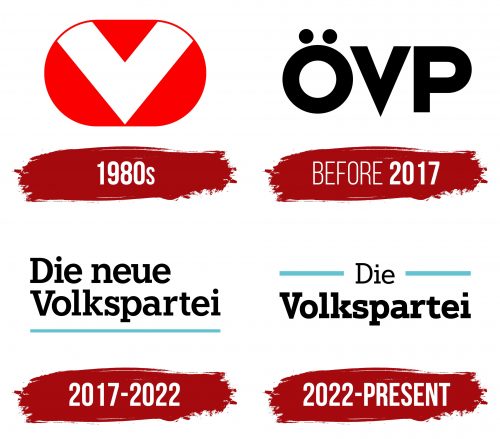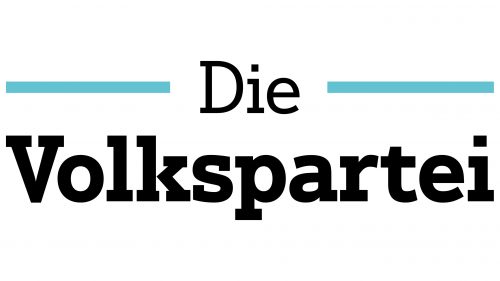 Austrian People’s Party Logo PNG
Austrian People’s Party Logo PNG
The Austrian People’s Party logo is designed in a journalistic style. The symbol emphasizes harmony, stability, and confidence in the future. The idea of uniting all Austrians is evident in the emblem.
Austrian People’s Party: Brand overview
April 17, 1945, marks the birth of the Austrian People’s Party (ÖVP), emerging from the ashes of World War II. This party, succeeding the pre-war Christian Social Party, united conservative and Catholic groups. Leopold Figl, the first leader, became Austria’s first post-war Chancellor, guiding the nation through its rebuilding phase and establishing the Second Austrian Republic.
The party dominated Austrian politics in the early decades after the war, frequently forming coalition governments with the Socialist Party of Austria, later known as the Social Democratic Party of Austria (SPÖ). In 1953, Julius Raab succeeded Figl as party leader and Chancellor, leading Austria to full independence from Allied powers in 1955 and adopting a policy of permanent neutrality.
During the 1960s and 1970s, the party’s dominance faded, and the organization moved into opposition for the first time in 1970, as SPÖ, under Bruno Kreisky, took power. The group returned to government in 1986, forming a grand coalition with SPÖ under Chancellor Franz Vranitzky until 2000.
Wolfgang Schüssel became the leader in 1995, steering the party to the right and distancing it from SPÖ. Despite finishing third in the 1999 elections, behind SPÖ and the right-wing Freedom Party of Austria (FPÖ), Schüssel formed a coalition with FPÖ, sparking international controversy and temporary EU sanctions.
Schüssel’s government (2000-2007) implemented neoliberal economic reforms, privatizing state enterprises and reducing social spending. In the 2002 elections, the group achieved significant success with 42.3% of the vote, allowing Schüssel to remain Chancellor and form a new coalition with FPÖ (later with BZÖ after FPÖ split).
By 2007, the party re-entered a grand coalition with SPÖ but as the junior partner. Wilhelm Molterer served as Vice-Chancellor and Finance Minister. In 2011, Michael Spindelegger took over as party leader, continuing the coalition with SPÖ but struggling to maintain voter support. Reinhold Mitterlehner replaced Spindelegger in 2014, facing challenges in reversing the party’s declining popularity.
A significant turning point arrived in 2017 when Sebastian Kurz, youthful and charismatic, was elected as leader. Kurz rebranded the party, focusing on curbing illegal immigration and economic reforms. Under Kurz’s leadership, the group won a decisive victory in the 2017 elections with 31.5% of the vote, making Kurz the youngest Chancellor in Austrian history. He formed a coalition with FPÖ.
In May 2019, Kurz’s government fell due to a scandal involving the FPÖ leader. In the snap elections of September 2019, the group strengthened its position, securing 37.5% of the vote. By January 2020, Kurz formed a new government in coalition with the Greens, marking Austria’s first such federal alliance.
Meaning and History
What is Austrian People’s Party?
It is a political party that adheres to conservative and Christian-democratic values. The party supports a free market economy, social justice, and European integration. It advocates preserving traditional family values and Austria’s active participation in international affairs. The party plays an important role in Austrian political life and regularly participates in coalition governments.
1980s
The red oval with a large, massive white “V” looks impressive and emphasizes the dominance of nationalist ideas. The enclosed shape symbolizes the unification of all Austrians. For a long time, the organization was a major member of coalitions with the Social Democratic Party, which explains the red background color.
The white color highlighted Christian Catholic values as the foundation of unity. Most of the party’s supporters originally belonged to The Fatherland Front, which adhered to the theme of nationalist pride and independence from Germany. The “V” stands for Volkspartei, further emphasizing the focus on the unity of the Austrian people.
Before 2017
For a long time before the rebranding in 2017, the party’s logo was the abbreviation ÖVP, which stood for Österreichische Volkspartei Party. The black, simple font emphasized consistency and firmness in its position. The party’s ideals were dominant in Austria. The movement was the second most powerful and led federal cabinets for many years.
2017 – 2022
In 2017, the party underwent reformation, with Sebastian Kurz taking leadership. The movement’s name was changed to Die neue Volkspartei, and turquoise accents were added to the traditionally black logo. A straight, thin line underscores the new name on the emblem.
The symbol indicates that the party has been renewed and its foundation changed. The movement’s views shifted to the right. The organization opposed illegal immigration and political Islam, aiming to support Austrians’ traditionally Catholic views.
The public positively received the transformation, allowing the organization to become Austria’s largest party and form the government.
2022 – today
The “Die Volkspartei” logo reflects the historical significance and mission of the Austrian People’s Party (ÖVP). Founded in 1945, the party played a key role in Austria’s post-war reconstruction. The party aims to unite people under the banner of Christian values and advocate for their interests in the political arena.
The logo consists of the text “Die Volkspartei” with two straight blue lines surrounding the word “Die” at the top.
The article “Die,” positioned at the top of the logo and surrounded by two straight blue lines, creates a sense of classical neatness, like the title of a book. The placement of the lines above symbolizes God’s dominion over people, representing the unification of residents under common Christian values.
The bold inscription “Volkspartei” emphasizes the focus on the rights and interests of Austrians, demonstrating the party’s importance in the country’s political life and its commitment to defending the people’s interests.
The logo’s font has clear and confident lines, giving it a sense of solidity and reliability. The word “Volkspartei” is bold, underscoring the party’s strength and importance.
The blue lines around the word “Die” symbolize purity and tranquility, while the black text of the logo conveys the party’s seriousness and stability.







